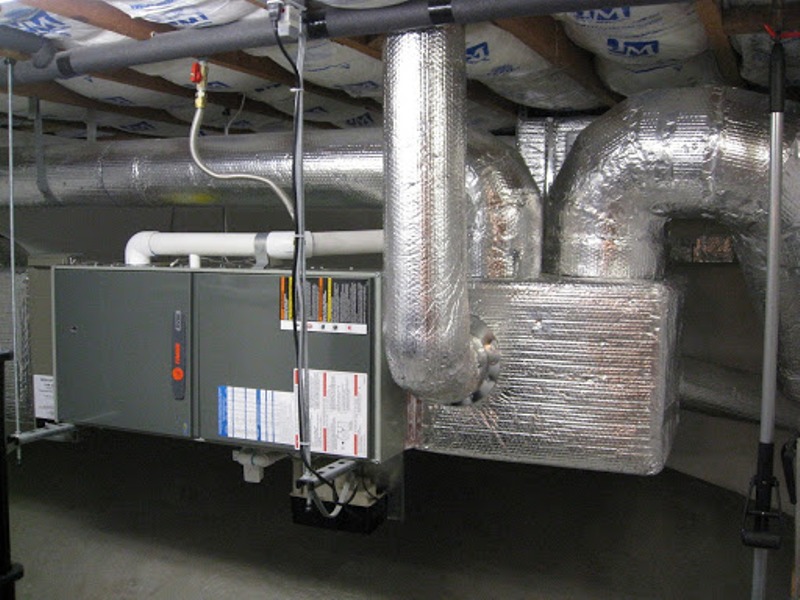A heating system or a air conditioner is one of the top amenities needed in a home. It provides homeowners with comfort during extremely cold weather. Investing in one can increase a home’s value significantly. Before embarking on a furnace installation project, the homeowner must research the ideal options and costs associated with them. Having a home furnace doesn’t only come with comfort and value, but it also reduces energy costs.
Types of Heating Systems
When it comes to home furnaces, there are three types: electrical, gas, and oil. These types fall under forced air furnaces. Other categories include solar panel, geothermal, and boiler heating systems.
Electric Furnaces
Electric heating systems are ideal for places that are not prone to extreme winter weather. The initial upfront costs for these furnaces are the lowest. However, they are expensive to run due to high electricity bills. Nevertheless, newer systems are highly energy-efficient, especially in places with a temperature above freezing point.
Another factor worth noting about these heating systems is that they are small in size, enabling easy installation. Since they don’t need pipes or vents to operate, the maintenance cost is relatively lower than their counterparts. An electric furnace has a lifespan of 15 to 20 years.
Gas Furnaces
Gas heating systems are in high demand due to their optimum performance in extremely cold conditions. Homeowners residing in areas prone to harsh winter weather will find these appliances an excellent choice. However, the upfront cost for a gas furnace is higher than that of an electric heating system. Nevertheless, the monthly operating cost compensates for that amount as it is low. In terms of efficiency, gas furnaces take it all. They can quickly heat a home.
Owning a gas furnace comes with additional cost. A homeowner has to cater to installation, replacement, and maintenance fees. Other tasks may include consistent cleaning ductwork, filter replacement, and appliance inspection.
Oil Furnaces
These heating systems are not in vogue due to oil price volatility. But they serve homeowners well, especially in places prone to extremely cold conditions. They come with fuel storage tanks. As such, additional cost and space is necessary to operate them.
On the brighter side, there is little to no operating cost. The homeowner only has to pay to refill the storage tank with oil (quarterly, semi-annually, or annually).
Installing a New Furnace – Step by Step Process

One important factor to note before installing a home furnace is to turn off electrical and gas supplies. Leaving them on can pose potentially life-threatening risks to the homeowner. As such, it is essential to take this instruction seriously. Having turned the utilities off, the homeowner may proceed to remove the old furnace. When undertaking this task, have protective gear and gloves on. This safety measure prevents bodily harm, including cuts from old metal sheets. Disconnect electric wires and gas pipes. Once done, detach the vent pipes and ductwork.
Now, the area is set for new furnace installation. Clean the furnace place thoroughly. Having a technician undertake this task saves time and money, and prevents mistakes from occurring. To begin with, the HVAC expert reconnects the pipes, ductwork, and wires to the new furnace. Once done, the individual proceeds to connect the thermostat before turning on the gas supplies and power. The next step to take is to test the new appliance and check for faults, including leaks.
Average Cost of Installing a New Furnace
When analysing the cost of installing a new home furnace, a homeowner has to consider the following:
- Home size
- Location
- Unit type
- Unit brand
- Technician’s expertise level
- Potential ductwork handling
- Type of furnace (gas, electric, or oil)
- Local climate
Should the home need significant ductwork or repair your air conditioner or installation, the costs may increase. The homeowner may also have to obtain a permit for furnace installation. This requirement depends on the area of residence. Additionally, there may be inspection from the designated municipal or city agency.
The cost of installing a new furnace may range from hundreds of dollars to thousands. It is advised not to go for less when undertaking this project. Having a standard heating system that can handle everyday usage will provide the homeowner with value for money. Hence, it is an investment worth making.
Choosing a certified technician will ensure a smooth and safe installation process. Avoid going cheap as there may be potential risks that money can’t solve. The installer should have vast experience and skill in carrying out the project. Once that is in place, the furnace is guaranteed to last for a long time.
Factoring in Warranty When Installing a Home Furnace

New home furnace installations often come with a warranty. As such, the homeowner doesn’t have to worry about covering repair costs entirely. The warranty duration varies from one manufacturer to another. On average, it ranges from five to ten years. Premium brands tend to offer better options as well. homeowners can purchase an extended warranty for the heating system. This option is available at an additional fee. If the home has been standing for a very long time, there may be a need to renovate the furnace place. Doing so will ensure that the installation spot accommodates the new home furnace.
Bottom Line
To get a better experience, the homeowner can seal air leaks. These include leaky windows, foundation cracks, door sweep replacement, and many more. By doing so, the home’s energy efficiency increases, saving more operational cost. When selecting a home heating system, consider the following elements – ignition system, air filtration, variable heat output, dual heat exchanger, variable speed blower, and zoned heating. Factoring in these factors will increase efficiency and comfort.
For example, having an integrated filtration system will reduce the circulation of dust in the heating system. Some furnaces experience a continuous-burning pilot light. This problem slows down efficiency. To rectify it, the homeowner needs to install an ignition system. In the same vein, a variable heat output enhances heating efficiency and comfort. Furnaces with variable-speed blowers have this feature.
Dual heat exchanger ensures optimum performance by exerting heat from burned gas. To ensure a smooth, controlled, and noiseless delivery of air from the heating system, a variable-speed blower is required. There may be the need to heat specific spots in the home. Having a zoned heating feature in the heating system will address this factor.






